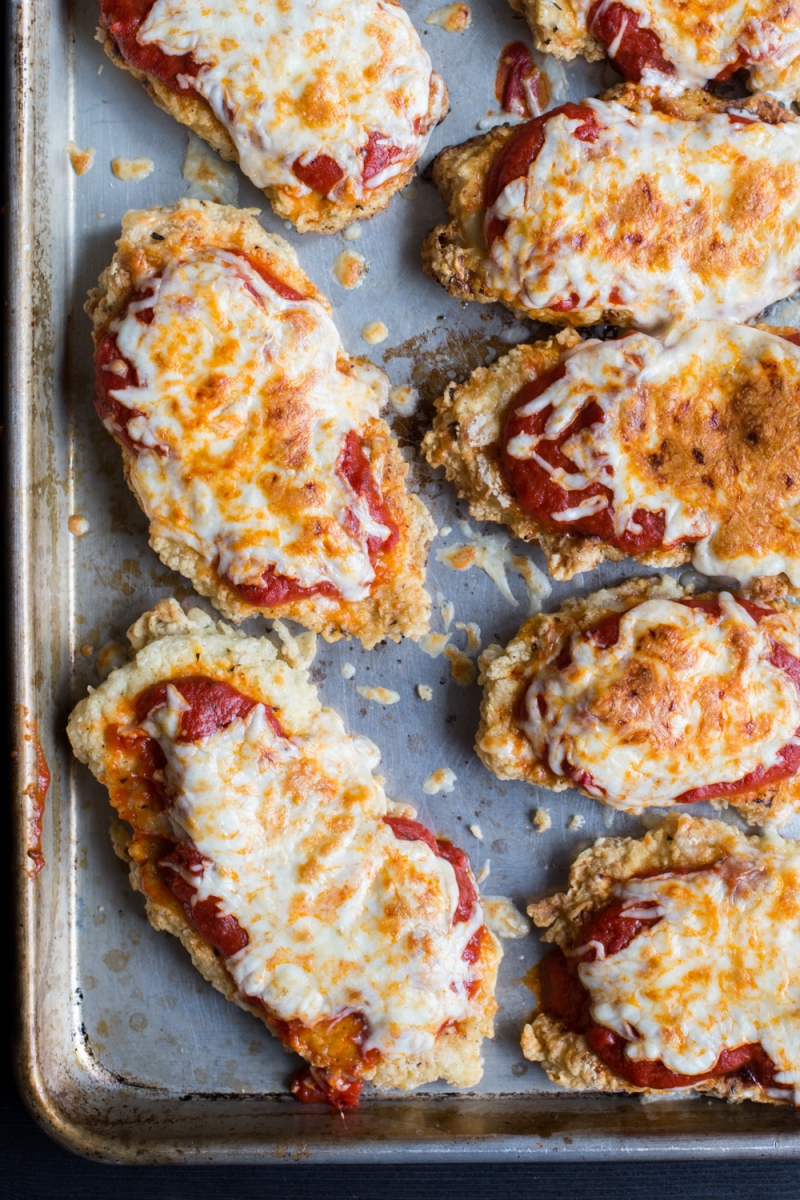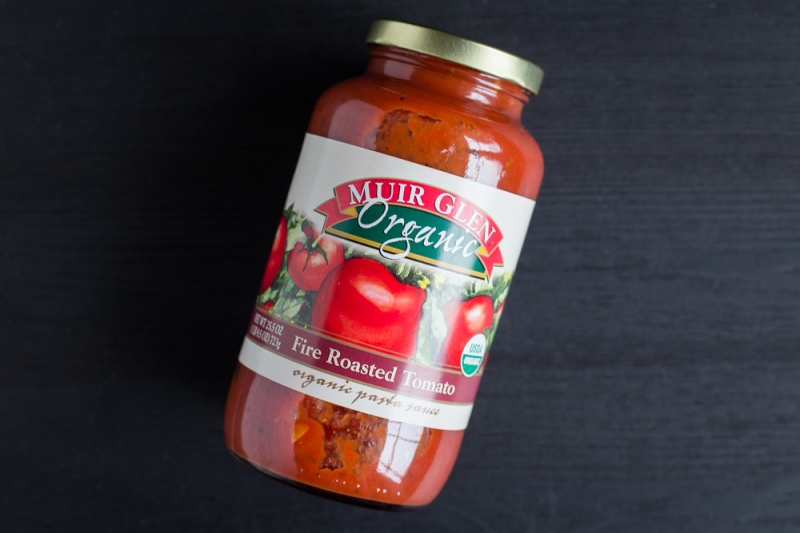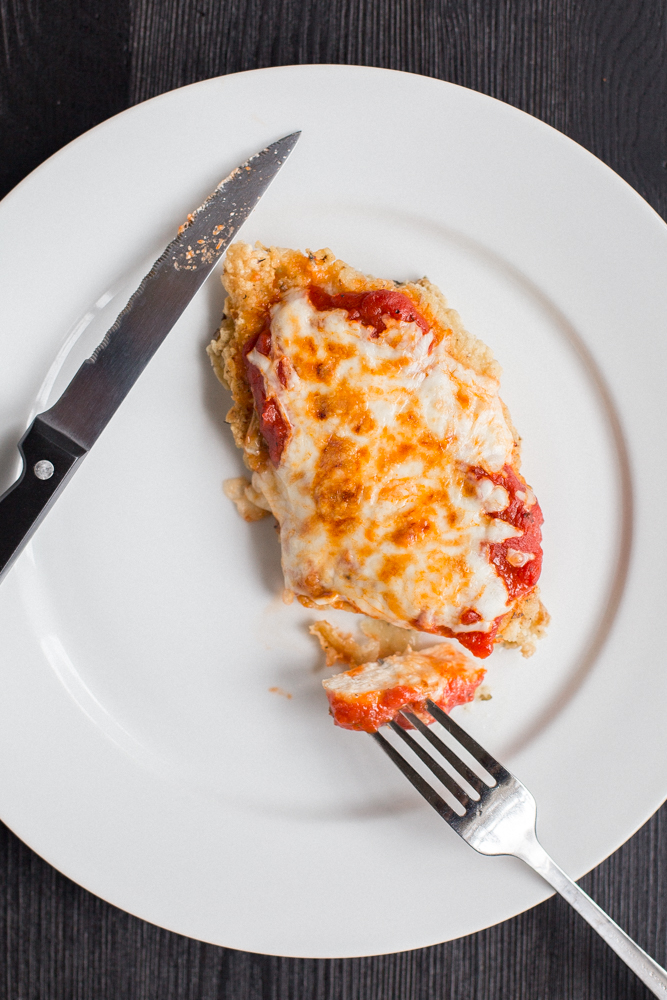
Parmigiana is a method of Italian cooking wherein breaded, fried cutlets are layered in cheese and tomato sauce. Originally made with eggplant (Melanzane alla Parmigiana), breaded chicken and veal cutlets are popular as well. There is some dispute as to where this dish came from; logic would dictate that the Northern city of Parma started the craze, but Southern regions Campania and Sicily also stake a claim in this dish. A common misconception is that the dish got its name from its inclusion of Parmesan cheese (despite the fact that mozzarella is the most common cheese used in this dish); but like Chicken Parmesan, Parmesan cheese got its name from the fact that it is produced in the city of Parma.
While Chicken Parmesan is fairly well-known in the US, it’s of monstrous popularity in Australia, where it is called Chicken Parm, Chicken Parma, or even Chicken Parmy. Their take on the dish usually includes french fries, and was named the #37 best food in the world by CNN Traveler a few years back.
My take on the dish is surprisingly similar to the way I made it while working as a line chef many years ago; the only thing that’s changed is the breading ingredients. While plain tapioca or arrowroot starch works well for its first dusting layer, mixing the starch with some potato starch for the outer breading layer gives the outside a crisp texture. If you’re looking for a really authentic, slightly rough texture that only breadcrumbs can provide, you could toast your favorite gluten-free bread, cool it, then blend to make breadcrumbs. But as you’ll see from the pictures below, this simple preparation is pretty awesome, too.

In terms of taste and convenience, I love this Muir Glen sauce. Sure, you could fire-roast your own tomatoes and spend a couple hours making a delicious sauce, but I’ll leave this one to the professionals.
Chicken Parmesan (Gluten-Free, Grain-Free, Paleo, Primal)
25.5 oz jar pasta sauce
4 chicken breasts
3 eggs, beaten
for dusting:
1/4 cup tapioca or arrowroot starch
1 tsp salt
1/2 tsp paprika
for breading:
1/4 cup tapioca or arrowroot starch
1/4 cup potato starch
1 tsp black pepper
1/2 tsp dried oregano
1/2 tsp dried basil (dried parsley okay)
1/4 cup lard, ghee, or coconut oil
8oz mozzarella cheese, grated (omit to make dairy-free, see notes below)
1. Empty the pasta sauce into a saucepan and bring to a simmer; reduce heat to low to keep warm while you prepare the chicken.
2. Place the chicken flat on a cutting board, then slice the chicken lengthwise to make two thin butterflied cutlets. Gently pound with a meat tenderizer to an even thickness, about 1/2″, then set aside. Prepare three wide, shallow bowls to bread the cutlets. In the first bowl, combine the dusting ingredients. In the second bowl, add the beaten eggs. In the third bowl, add the breading ingredients.
3. Now you’re ready to start cooking. Preheat your oven to 350F. In a large skillet, warm the lard, ghee, or oil over medium/high heat (you’re looking for an oil temp of 325F). Once the oil is warm, dust a chicken breast in the first bowl, then transfer to the second bowl and cover in egg, shake off any excess egg, then cover with the starch in the third bowl. Add to the skillet and repeat for however many breasts you can fit in the skillet at one time (don’t bread the chicken until right before you’re going to add it to the oil).
4. Pan-fry the chicken until golden brown, about three minutes per side, then transfer to a baking sheet. Don’t worry about whether the chicken it cooked through; the oven will finish it off. Add more oil if needed and repeat step #3 until all of the chicken has been pan-fried.
5. Spoon the pasta sauce over the cutlets, then sprinkle on the cheese. Place in the oven to bake until the cheese has melted, about 8 minutes, then broil for 2 minutes or until the cheese is spotty and golden (watch it like a hawk at this point). Remove from the oven and serve.
** It is possible to bake these instead of frying them. To do so, line a baking sheet with a wire rack; bread all of the breasts at once using the process in step #3, then place on the wire rack. Bake at 400F until golden, about 15-20 minutes, flipping at the 10-minute mark. Remove the wire rack, add the sauce and cheese and bake until the cheese is melted, about 6 minutes, then broil for 2 minutes or until the cheese is spotty and golden.
** While fresh mozzarella cheese is typically used in this dish, substituting a harder cheese may be easier on your digestion (aged cheese has been fermented longer).
** I’ve heard good things about this nut milk cheese, if you’re looking to go dairy-free but still want a cheese-like experience.

Adding potato starch to the breading makes it the chicken especially crispy, but sometimes leaves a light white dust on the breading after you fry it; you can see the same thing on my Southern Fried Chicken recipe from a few years back. Not really sure what causes it, but it’s mighty tasty.

The way I decide how much cheese to put on Chicken Parmesan is what I call the “melt-test”. I add some cheese over the warm sauce and watch to see if it starts to melt. If so, I add more until the cheese keep its shape. I use this same idea when making pizza. There isn’t really any science behind it, just a trick I developed when I worked at a pizza parlor nearly 20 years ago. Man, I’m getting old!

This was my son’s first Chicken Parmesan experience. He loved it.

Reblogged this on shellyakacherrysays.
LikeLike
Some awesome info in here. I love Australia, but the fries is making this Italian chick cringe. :) Looks delicious. MANGIA!
LikeLike
looks delicious :)
LikeLike
My daughter insisted we share with you that we had used your recipe for chicken nuggets to create chicken Parmesan. I didn’t do the extra step of a final breading and it still worked out great. I do use homemade roasted tomato sauce on my chicken. My mom and I love making the sauce together. We also use your breading method to make onion rings. My daughter and husband love them. I have beef stew on the stove and will have to make your cheese buns to go with it. Yummm. Thanks for all the great recipes!
LikeLike
I have since tried this recipe instead of your nuggets recipe. It’s so good. It has replaced the other one for me. Thanks again!
LikeLike
My diet want me to stop seeing good food as here… :)
LikeLike
Love this, thank you for highlighting alternative starches! Reposting this recipe on our site, thank you!
LikeLike
This looks really good! I’m going to try you breading technique.
As an Italian, as a curiosity, I’d like to add that we don’t know “chicken parmigiana”, there is no such a dish in Italy. For eggplant parmigiana, I think it’s only a very specific regional thing to bread the eggplants, almost no one use bread crumbs for this. Most just pass the eggplant in flour then egg. In my region we do instead a crepe batter to dip the eggplants.
Other famous parmigiane are: with cardoons, with artichokes (also white-no tomato), with zucchini.
LikeLike
Chicken Parmesan is my favorite meal…I’m going to have to try your take on it! Looks great :)
LikeLike
Dude, nice looking recipe, but your Italian geography is lacking. Parma is a *city*, not a region, and it doesn’t neighbor the Emilia-Romagna region (not Reggio Emilia), it is the main city *within* Emilia-Romagna. Not that anyone cares except for a former Italian major like myself.
LikeLike
Thanks for the clarification, serves me right to trust some web-translated sites and not fact-check myself. To be honest Italian geography is overwhelmingly complex so I just took it at face value! Fixed the post. Thanks again.
LikeLike
:) !
LikeLike
Russ, I think you already corrected your words but I want to clarify that in Italian, “provincia” doesn’t have the same meaning as the English “province”. Provincia is in intermediate division between a municipality and a region.
Emilia-Romagna is composed of 9 “province” (plural of provincia):
Bologna
Ferrara
Forli’-Cesena
Modena
Parma
Piacenza
Ravenna
Reggio Emilia
Rimini
LikeLike
Of course, I mispelled my name, ah, ah
LikeLike
I have just recently decided to be a little more healthy and this right here will get my taste buds through it. This looks delicious!
LikeLike
Awesome! Let me know what you think if/when you try it!
LikeLike
Looks amazing !!
LikeLike
This sounds great! Going to give it a shot next week. Any suggestions on a easy side dish?
LikeLike
Hi Misty, I think a big salad goes best with chicken parmesan – its lightness really emboldens the richness of the dish. Lots of olive oil, vinegar, and cracked black pepper, and you’re set!
LikeLike
On your recipe, when you said tapioca .. are you referring on starch or flour?
LikeLike
Starch. Sometimes it is labeled as flour as well, especially by U.S. manufacturers. There is such a thing as tapioca (or yuca or cassava) flour, which is more fibrous, but in the U.S. they are usually all words for tapioca starch. I realize that’s confusing, just look for tapioca that looks more like a fine powder than a textured flour and you should be good.
LikeLike
Trying to convert a girlfriend of mine to more wholesome versions of some of her favorite dishes. Let’s just say the majority of her grocery cart is full of pre-made frozen meals. SO I made this tonight for her and I. DELICIOUS!!! She’s a pasta lover, so I served the chicken parm with Andean Dream fusuli (made only with white rice flour and quinoa flour, gluten free, non-GMO, organic), and some roasted veggies with plenty of diced garlic thrown in. AWESOME RECIPE!! Very easy to follow. And who doesn’t like having a little fun with the tenderizer?? haha! I think I’m winning the battle ;-) Way to go, Russ!
LikeLike
Hey Russ!
I had a question about adding the bread to the breading that you noted in your into. Would you add that into the mix of breading ingredients or use in place of your suggested breading? I definitely want more of a firmer texture for my chicken parm but Im not confident about when to add it in. Please let me know what you suggest! Thanks!
LikeLike
Hi Kaeti, yes you’d want to use the breadcrumbs in place of the potato/tapioca starch mixture during the third phase of breading (the “for the breading” part). You’ll still want to use the seasoning in that part, mixed with the breadcrumbs. Best of luck!
LikeLike
Hi – Love your recipes! Do you think Sweet Potato Starch would work? That’s what I have in my pantry. Thanks!
LikeLike
Hi Fran, I haven’t seen sweet potato starch before – typically a sweet potato doesn’t have enough starch to extract and make into a powder. My guess is that it might be sweet potato flour (which contains fiber from the sweet potato) but labeled as starch (the whole starch/flour labeling world is very confusing!). If it’s a fine powder like corn starch, it should work okay; if it’s a more fibrous powder, like flour, then it will likely burn as you fry with it due to the natural sugars in the flour. Hope that makes sense, and best of luck!
LikeLike
OK I have tried this two times. I have opted for the baking version both times, and I followed your directions one time and the breading stuck to the wire rack. I then attempted the other time to use tin foil directly on the wire rack in the oven. Any advice? Its disappointing to make this two times and have the breading stripped off even when doing it your way. Both times for my husband, and both times, me picking the breading and dropping what I can on top.
LikeLike
These are absolutely delicious! The whole family loved them. I did want to point out that i had to double the breading mixture after running out half way through.
LikeLike